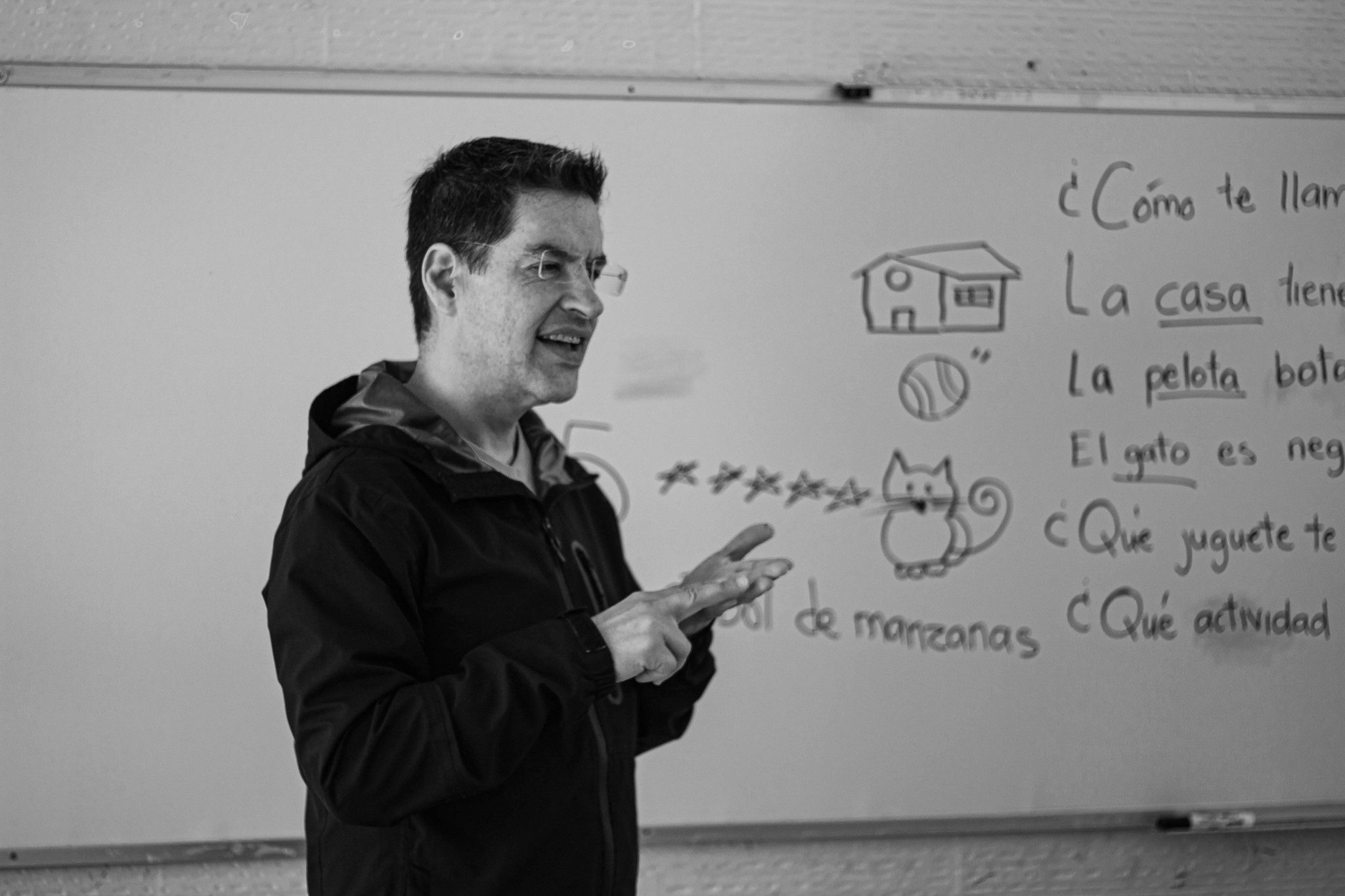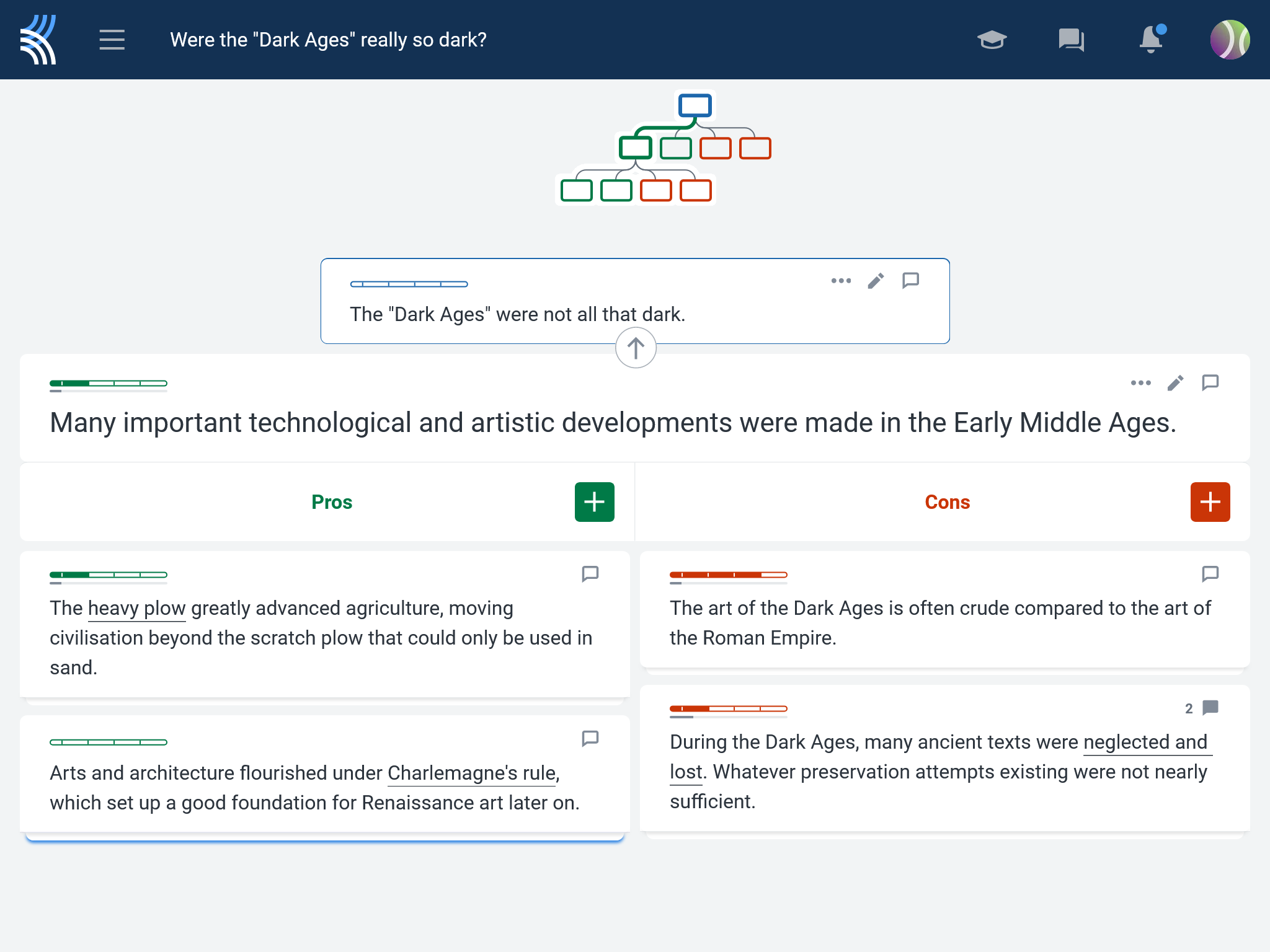A packed curriculum means it’s important to maximize the potential of every classroom activity — including class discussions! You can transform discussions into meaningful learning opportunities by aligning them with clear learning objectives linked to curriculum standards.
With that in mind, we’re here to share our expertise to guide you in writing actionable learning objectives for class discussions (including ones you can do on Kialo Edu!). We even have free discussion resources to help you maximize student engagement and achievement.
Why is it important to write learning objectives for class discussions?
In class discussions, learning objectives act like a roadmap to guide students toward productive conversations while staying on topic. This makes discussions more purposeful to maximize learning time.
Moreover, learning objectives help focus discussions by targeting specific cognitive skills like critical thinking, language acquisition, and problem-solving. They can also address curriculum standards in subjects like reading, writing, and interdisciplinary literacy.
Finally, aligning discussions with learning objectives facilitates assessment. Educators can use these opportunities to assess students’ progress toward curriculum standards, with the added bonus of students self- and peer-evaluating their work.
How do I write good learning objectives for class discussions?
Learning objectives for class discussions should be specific, measurable, and actionable. Here are our top tips to achieve this:
- Use clear, concise language to facilitate student understanding.
- Use action verbs aligned with cognitive frameworks like Bloom’s Taxonomy or Webb’s Depth of Knowledge framework.
- Target specific cognitive skills or curriculum standards.
- Connect objectives to unit/course goals, making the discussion integral to students’ learning journeys.
- Ensure objectives are achievable within the timeframe.
Now, let’s take a look at examples of discussion learning objectives that target a range of skills and subjects.
Learning objectives for developing students’ critical thinking skills
To develop students’ critical thinking in discussions, objectives should target higher-order skills like synthesis, analysis, and evaluation. Students can apply these skills to construct evidence-based positions in arguments and debates. Below are some examples of subject-specific class discussions:
Science:
Students will be able to argue for their position on the ethics of a scientific issue, using two scientific studies to justify their argument.
Try it in a Kialo discussion: Should cloning humans be legal?
Civics:
Students will be able to collaboratively identify two potential biases in a news source and explain how these could affect the audience’s perception of the information.
Social Studies:
Students will be able to identify two logical fallacies used in a debate on a societal issue and explain how these weaken the arguments.
Try it in a Kialo discussion: Is democracy a good form of government?
Learning objectives for developing students’ problem-solving skills
Discussions encourage collaboration, making them ideal for developing students’ problem-solving skills. Objectives should focus on having students analyze situations, explore causes, and develop solutions. Here are some examples:
Economics:
Students will be able to present and defend a solution to a labor issue within an LMIC’s supply chain and reflect on alternative solutions from peers.
Try it in a Kialo discussion: Should society reject fast fashion?
Geography:
Students will be able to generate two potential solutions to an environmental problem, and use a decision-making framework to evaluate the potential consequences of each one.
Literature:
Students will be able to articulate the internal conflict faced by a novel’s main character and generate three possible solutions, considering the character’s motivations, limitations, and the context of the story.
Try it in a Kialo discussion: Was George right to kill Lennie in “Of Mice and Men?”
Learning objectives for developing students’ language acquisition skills

Discussions provide opportunities for students to acquire and apply new language. Objectives may target building students’ subject-specific disciplinary language, developing students’ fluency in a foreign language, or, for ESL students, applying their English language skills for different purposes. Here are some example objectives:
Art:
Students will be able to identify three key elements in an artwork and explain how they contribute to the artist’s intended meaning or message.
Try it in a Kialo discussion: Is “Fountain” really a work of art?
Religious Studies:
Students will be able to critically evaluate opposing viewpoints using accurate religious vocabulary, and construct well-reasoned counter-arguments supported by relevant scripture or scholarly sources.
Try it in a Kialo discussion: Do all religions worship the same higher power?
Foreign language:
Students will demonstrate fluency in using sentence structures and vocabulary from the unit when discussing the advantages and disadvantages of a topic.
Try it in a Kialo discussion (available in multiple languages): Which country would be the most interesting to visit?
English as a Second Language (ESL):
Students will demonstrate fluency in using transition words and phrases when summarizing key arguments for and against a topic from a class debate.
Try it in a Kialo discussion: Is it better to live in the city or the countryside?
Learning objectives for developing students’ reasoning and analysis of claims
Objectives to develop reasoning and claim analysis skills should center around having students evaluate the strength of claims and analyze relationships between factors to develop lines of reasoning. Try these examples:
History:
Students will be able to analyze claims about the causes of a historical event from two different perspectives, citing primary or secondary sources to support each perspective.
Try it in a Kialo discussion: What was the main cause of the Great Depression?
Geography:
Students will be able to evaluate evidence about the impact of four human activities on an environmental issue, ranking the activities based on the strength and credibility of supporting evidence.
Social Studies:
Students will analyze the pros and cons of a recent societal development, creating a cost-benefit assessment to analyze its potential impacts.
Try it in a Kialo discussion: Do the costs of AI outweigh the benefits?
Learning objectives for developing students’ communication skills
Classroom discussions provide a safe space for students to practice communicating respectfully and engaging with diverse perspectives. Objectives should aim to move students beyond “winning” arguments toward finding common ground. Try these with your students:
Science:
Students will be able to identify different perspectives and their supporting evidence on a scientific topic.
Try it in a Kialo discussion: Should we develop technology that can read minds?
English Language Arts:
Students will be able to articulate three perspectives on a recent news story and explain the reasoning behind each one in their own words.
Literature:
In a Socratic seminar, students will be able to express their textual analysis and interpretations using appropriate tone, word choice, and organizational strategies, and provide constructive feedback to classmates.
Try it in a Kialo discussion: Does Never Let Me Go create a more effective sense of threat than The Handmaid’s Tale?
Does Never Let Me Go create a more effective sense of threat than The Handmaid’s Tale? — kialo-edu.com
How can students achieve learning objectives in Kialo discussions?
1. Kialo discussions greatly increase student participation
The written format of Kialo discussions can help increase student participation and therefore opportunities to achieve learning objectives. That’s because all students can add their ideas simultaneously, while less confident students are free from the pressure of public speaking. Moreover, Anonymous Discussions mean all students can contribute freely, without fear of judgment.
2. Kialo discussions develop students’ critical thinking and problem-solving skills

The branching format of Kialo discussions supports students in meeting critical thinking and problem-solving objectives. Students can visualize how ideas connect, enabling them to build sophisticated lines of reasoning. This format also prompts self-reflection, as students deconstruct their perspectives into step-by-step arguments, referencing sources to justify reasoning.
3. Kialo discussions help educators assess students against learning objectives
Contributions to Kialo discussions are automatically saved, providing valuable assessment evidence. The argument tree and sunburst visualizations offer an overview of the entire discussion, or you can view students’ individual contributions to assess their progress toward objectives.
You can even provide personalized, targeted feedback on individual claims, helping students address areas for development and meet the intended learning objectives.
So, it’s time to empower students to achieve learning objectives through dynamic class discussions! Head to Kialo Edu’s Topic Library, a treasure trove of over 500 free ideas for discussions spanning history, science, literature, and more. You’ll find discussion topics that not only spark conversation but also directly connect to your learning objectives. Try them out today!
We’d love to hear how you are transforming class discussions into purposeful learning opportunities. Contact us at feedback@kialo-edu.com or on social media.

